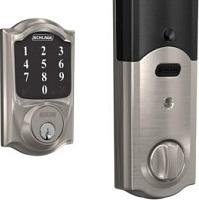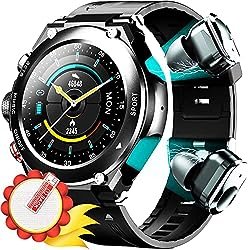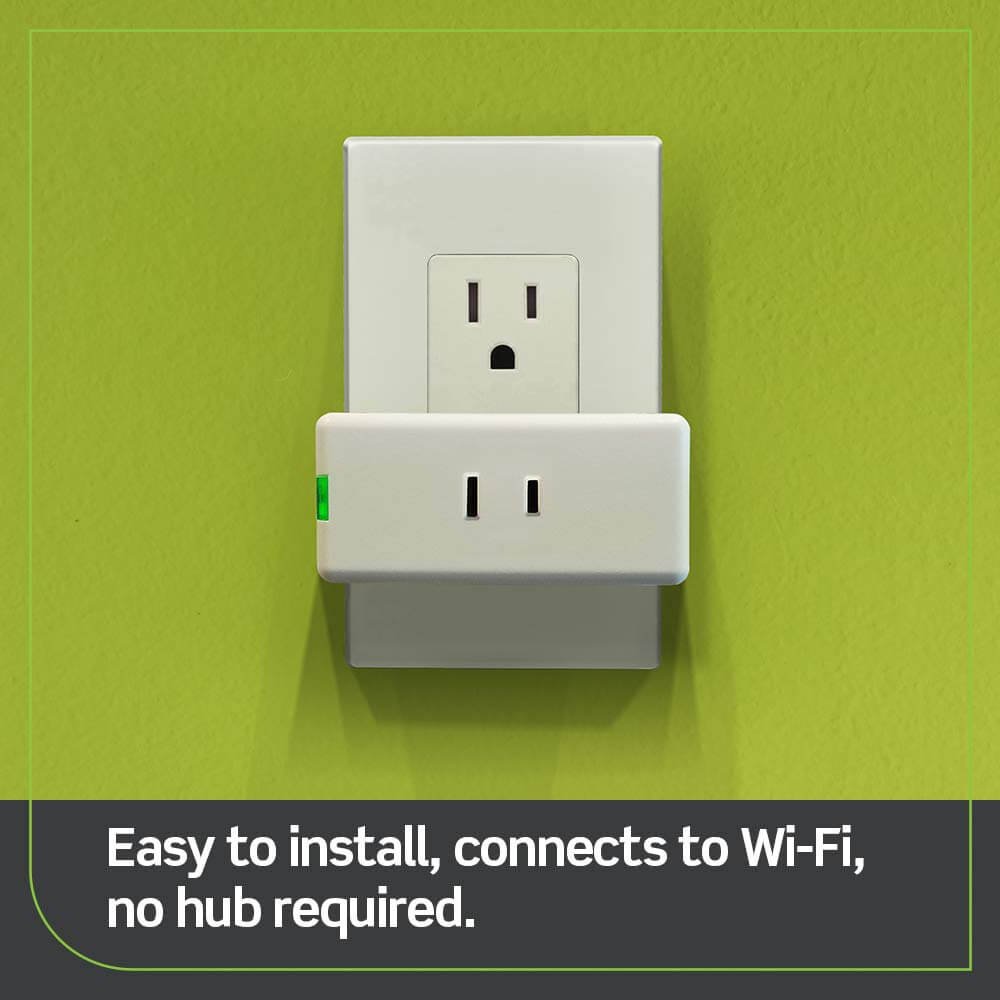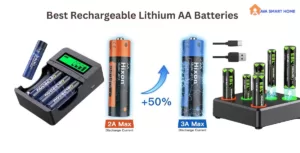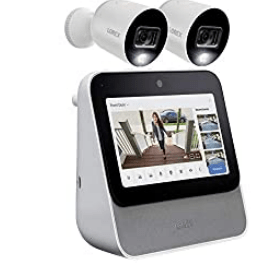Ring vs Lorex offers exceptional choices for homeowners and businesses seeking top-tier security solutions. In this comprehensive article, we will delve into the key distinctions between these two leading brands to help you make an informed decision.
We’ve analyzed a total of security cameras across different categories, including storage, smart monitoring, audio capabilities, pan-tilt-zoom features, night vision options, video functions, and more. This thorough examination will assist you in identifying the best fit for your security needs.
Table of Contents
ToggleBest for Home Security: Ring
If you’re in search of user-friendly security cameras that seamlessly integrate with your smart home ecosystem, particularly if you’re an Amazon product user, Ring is the clear choice. Ring’s interface is intuitive, and its cameras come equipped with integrated microphones and speakers, ideal for effortless installation and remote access.
Best for Advanced Security: Lorex
Lorex is the go-to brand for those in need of a comprehensive and versatile security system, complete with flexible financing options. With a wide array of products catering to various budgets, Lorex offers multiple storage choices and cameras with robust zoom capabilities, including PTZ functions.
Lorex’s cameras are known for their durability, water and dust resistance, and ability to withstand varying temperature and humidity conditions, making them ideal for outdoor use.
Winners per Category
Storage and Interoperability: Lorex
Smart Monitoring: Ring
Audio: Ring
Pan-Tilt-Zoom: Lorex
Night Vision: Lorex
Video: Draw
Power & Data: Draw
Camera & Lens: Lorex
Build Quality: Lorex
Overview
Ring, established in 2013, made a significant impact with its innovative Ring Video Doorbell, allowing users to remotely interact with visitors at their front doors via smartphones. Today, Ring offers a wide range of indoor and outdoor security cameras, a comprehensive security system, and various smart home devices. While Amazon acquired Ring in 2018, it continues to operate as a standalone brand, known for its user-friendly app and compatibility with other smart home devices.
On the other hand, Lorex, founded in 1991 and based in Canada, initially manufactured analog security cameras for commercial and residential use. Over time, Lorex expanded its product line to include IP cameras, NVRs, DVRs, and other security solutions, establishing itself as a popular choice among consumers in North America and Europe.
Product Range
Both Ring and Lorex offer a range of camera types, including video doorbells, bullet cameras, floodlights, and more. Ring offers a variety of video doorbell options, including high-end models like the Pro 2 and Video Doorbell Elite. Lorex, while providing fewer choices, offers budget and high-end options in this category.
Night Vision Options
Both Ring and Lorex equip their security cameras with night vision capabilities to ensure continuous surveillance. However, the quality and range of night vision can differ between models, so it’s essential to assess your specific needs.
Wired vs. Wireless
Ring typically provides wireless data transmission with wired or battery power options, whereas Lorex offers both wireless and wired data transmission and powering options. This versatility ensures flexibility in installation based on your preferences.
Mobile App and Smart Home Integration
The accompanying mobile apps play a vital role in the user experience. Ring’s mobile app is known for its user-friendliness and extensive smart home integration. Lorex provides a functional app, but it may not offer the same level of integration as Ring.
Cloud Subscription
Ring offers optional cloud subscriptions for most of its models, while Lorex doesn’t require cloud subscriptions for any of its models, making Lorex an appealing choice for those seeking a one-time investment without recurring monthly fees.
Design Options:
Just like with their video doorbells, Ring and Lorex offer various design options for their security cameras. Ring focuses on providing diverse designs to match different preferences, while Lorex’s designs are typically more utilitarian.
Image Quality:
For many users, image quality is paramount. Lorex shines in this department, particularly with their 4K Ultra HD cameras, which offer exceptional clarity. Ring’s cameras provide good image quality but may not match the crispness of Lorex’s higher-end models.
Color Options
Ring offers cameras in both white and black, while Lorex predominantly provides white cameras, with select models available in both white and black, such as the B451AJD-E, LNB9242B-W, and E841CA-E.
Pricing
Both Ring and Lorex cater to various budget ranges. Ring offers cameras in mid-range and high-end categories, with prices ranging from $59.99 to $349.99. Lorex provides a more extensive range, offering budget, mid-range, and high-end options, with prices starting as low as $39.99 and going up to $1,199.99 for specialized camera models.
Warranty
Understanding the warranty period is crucial when comparing brands. Ring typically offers one or two-year warranties, depending on the model, while Lorex provides a one-year warranty across most of its models.
Storage & Interoperability
Storage and interoperability functions are essential considerations when selecting a home security camera. Lorex offers diverse storage options, including microSD cards, NVRs, DVRs, NAS, wireless hubs, and FTP servers. This flexibility allows users to tailor their experience based on their preferences. In contrast, Ring primarily relies on monthly cloud subscriptions for storage, which may involve additional fees.
Smart Monitoring Function
Smart monitoring functions, including smart home integration, motion detection customization, and smart motion detection, play a crucial role in reducing false detections in security cameras.
Ring cameras tend to integrate well with consumer-grade smart home tech such as Alexa, Echo Show, and Fire TV. In contrast, Lorex cameras offer integration with smart home systems like Alexa and Google Assistant but may not be as consistent as Ring cameras in this regard.
Configurable motion zones and sensitivity are essential features of security cameras to reduce false alerts. Both Ring and Lorex camera models offer configurable motion zones, but not all Lorex models provide configurable motion sensitivity.
Motion alerts are standard for both Ring and Lorex models, with the majority of cameras offering push notifications for detected motion. Some Lorex models include additional event triggers
Motion Detection & Video Alerts
Motion detection technology is a fundamental aspect of security cameras. Ring’s system allows for customization with motion zones, while Lorex provides sensitivity adjustments. Both are effective in providing timely notifications and video alerts when motion is detected.
In conclusion, the Ring vs. Lorex comparison spans various facets of home security, including video doorbells and security cameras. Carefully assessing your priorities, budget, and specific security needs will help you make an informed decision and select the brand and products that best suit your home security requirements. Both Ring and Lorex have established themselves as reputable brands that can significantly enhance the security of your home.
Two-Way Talk Capabilities
Two-way communication with potential intruders or guests is a valuable feature, and both Ring and Lorex deliver in this aspect. Be sure to choose a camera that offers clear and reliable audio communication.
Winner: Ring
Ring takes the lead in the audio department with most of its models featuring both integrated microphones and speakers. In contrast, just over half of Lorex models in our research offer these features.
Two-way audio functionality is present in all Ring doorbell camera models and popular cameras like the Indoor Cam, Floodlight Cam Wired Pro, Spotlight Cam Plus Battery, and Stick Up Cam Battery. In contrast, Lorex includes two-way audio in only about half of its models.
Siren loudness is another area where Ring excels, as many of its cameras feature sirens with sound levels ranging from 100 to 110 decibels. This can effectively deter intruders or alert neighbors during security breaches. While Lorex models have fewer integrated sirens, some, like the W881AAD-E, match Ring’s siren loudness at 110 decibels.
Pan-Tilt-Zoom (PTZ)
We assessed the panning, tilting, and zooming capabilities of Ring and Lorex cameras, which are essential for comprehensive area coverage.
Winner: Lorex
Lorex takes the lead in this category with dedicated PTZ (pan-tilt-zoom) models and cameras featuring optical zoom. Most Lorex cameras offer digital and optical zoom capabilities, with digital zoom magnification of up to 16 times and optical zoom ranging from 4 to 25 times. Some Lorex models also include pan and tilt features, offering a 360-degree pan angle and a 90-degree tilt angle for versatile surveillance.
While Ring cameras primarily rely on digital zoom, a few exceptions, such as the Stick Up Cam Plug-In, offer limited pan and tilt features. However, Ring’s options for advanced features in this category are comparatively limited.
Night Vision
Night vision is a crucial feature for security cameras, allowing monitoring and recording in low light or nighttime conditions.
Winner: Lorex
Lorex stands out in the night vision category, offering additional full-color night vision options utilizing low-light sensors or built-in spotlights in many of their camera models. Infrared distance and coverage vary among these cameras, with some Lorex models providing up to 300 feet of visibility in total darkness.
Both Ring and Lorex employ infrared technology for night vision, but Lorex’s additional full-color night vision options, built-in spotlights, and superior infrared capabilities give it an edge in this department.
Spotlights act as an extra layer of deterrence against potential intruders. Ring offers spotlight-equipped cameras with 2000 lumens of brightness and two spotlights in most cases. Lorex also provides spotlight cameras with varying lumens and one or two spotlights, depending on the model.
Minimum Illumination for Color
In terms of resolution and image quality, both Ring and Lorex offer HD up to 4K resolution security camera models capable of capturing clear images day and night. Minimum illumination for color varies across the cameras, with some Lorex models featuring color night vision with illuminations as low as 0.005 lux.
Video Quality
We examined the video functions of both brands, including continuous recording, frame rates, the number of video streams, privacy masking, and video formats.
Winner: Draw
In the video category, it’s a draw between Ring and Lorex. Lorex offers higher frame rates, with several models boasting 30 frames per second (FPS). However, Ring provides privacy masking features, which are ideal for protecting sensitive or private areas from being recorded.
Both brands include a wide dynamic range (WDR) in their camera models, allowing them to balance exposure in scenes with varying lighting conditions.
Power & Data
We considered the power options, data types, and data transmission methods used by Ring and Lorex cameras.
Winner: Draw
When it comes to power options, Ring cameras offer a range of choices, including DC, AC, battery-operated, and solar panel options. Lorex primarily uses Power over Ethernet (PoE), DC power, or AC power, with select models also offering battery and solar panel options.
Data transmission is predominantly through Wi-Fi for both Ring and Lorex cameras, with Ring supporting 2.4GHz and 5GHz Wi-Fi in some models. Lorex cameras also use 2.4GHz Wi-Fi, and some models support both 2.4GHz and 5GHz Wi-Fi. Notably, several Lorex cameras utilize PoE or coaxial cables for data transmission, providing flexibility in installation.
Data types include IP for Ring cameras and a mix of IP and analog for Lorex, with analog Lorex cameras supporting various analog data formats such as HD-TVI, HD-AHD, HD-CVI, and HD-CVBS, transmitted via coaxial cables.
Camera & Lens
We focused on the field of view, image sensors, resolution, lens type, and aperture of Ring and Lorex cameras.
Winner: Lorex
Lorex emerges as the winner in this category, offering higher image quality and resolutions. Ring has cameras with a wider horizontal field of view.
Field of View (FoV) refers to the camera’s visible range, with Ring models ranging from 110° to 160° horizontally and Lorex models varying from 90° to 124°. Lorex offers models with adjustable FoV, providing flexibility in monitoring specific areas.
Both Ring and Lorex primarily offer fixed-focus lenses, suitable for constant focus on specific areas. However, Lorex stands out with motorized and manual varifocal lenses, allowing users to adjust their camera’s focus as needed.
Aperture details are more comprehensive for Lorex models, impacting low-light performance, while Ring does not specify aperture information for the products in our research.
Build Quality
We assessed weather resistance, maximum operating humidity values, and weight of Ring and Lorex cameras.
Winner: Lorex
Lorex Cams win in build quality, excelling in sturdiness, temperature tolerance, and humidity resistance.
Weather Resistance
Ring offers weather-resistant cameras typically constructed from plastic materials. They have a standard operating temperature range, with a minimum of -5°F and a maximum of 120°F. In contrast, Lorex boasts cameras with official IP (Ingress Protection) ratings, such as IP65, IP66, and IP67, providing water and dust resistance. Many of their models are made with metal or aluminum alloy, enhancing durability and suitability for outdoor use.
Operating Humidity Values
While Ring does not specify maximum operating humidity values for the models in our research, the majority of Lorex models in our research have maximum operating humidity values ranging from 90% to 95%. This suggests that Lorex cameras may perform better in high-humidity environments.
Weight
Lorex cameras vary in weight and can be heavier than Ring models. This is an important consideration when mounting cameras on delicate surfaces.
In conclusion, both Ring and Lorex offer a wide range of security camera options, each with its unique strengths and capabilities. The choice between the two brands depends on your specific requirements and priorities, such as ease of integration with smart home devices, advanced security features, and camera specifications. By considering the detailed analysis in this article, you can make an informed decision to select the security camera brand that best aligns with your needs and preferences.
At Ava Smart Home we take pride in delivering reliable and impartial information. When you make a purchase through the links on our site, we may earn a small affiliate commission at no extra cost to you.



